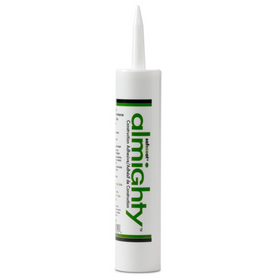
How Can Homeowners Offset Their Carbon Emissions Beyond the Home?
Last Updated: Feb 11, 2025Carbon offset programs have recently been center stage in the fight against climate change as they work to reduce an individual’s or organization’s environmental impact. These initiatives help dramatically and rapidly reduce embodied carbon emissions that stem from increased urbanization, travel, and lifestyle behaviors that influence ecological implications.
Table of Contents
- Terapass
- Community Forests International
- Flights
- Ridesharing
- CarbonFund
- Verified Carbon Standard

For an individual to offset their carbon emissions, there are multiple options. The following list will provide an overview of some available options. It is important to note that this list is certainly not exhaustive; instead, it is an introduction to well-known programs and their environmentally-positive initiatives.

Terapass
Terrapass offers individuals, businesses, and event planners the ability to offset their emissions through the purchase of carbon offsets, renewable energy credits, and water restoration certificates. For less than five dollars, an individual can purchase offsets of 1,000 pounds of carbon emitted. For reference, the average American produces 3,000 pounds of carbon emissions each month.
The projects in Terrapass’ portfolio include landfill gas capture, farm power, clean energy from wind farms, and abandoned coal mine methane. You can use their site to calculate your carbon footprint and see how it compares to the average American’s. By examining your travel habits and home’s energy usage in detail, you can determine how many offsets you can purchase to offset your annual carbon emissions.

Community Forests International
Community Forests International is a globally leading, environmentally forward non-profit that works to soak up CO2 directly from the air by planting trees and protecting forests. Their current initiative is to save an at-risk Canadian forest-- Acadian forest-- from continued deforestation. One of the most diverse forests globally, yet, it is one of the most endangered, with only 5% of pre-colonial conditioned forests remaining.
Goals for 2020 include protecting and restoring 5,000 acres of the Acadian forest, including 1 million trees and 40 tree species. Their end goal is to transform the Acadian forest into one of the world’s largest carbon storehouses. To do this, they follow strict verification standards, including the Forest Stewardship Council (FSC) certification. Their carbon offset projects can be donated on behalf of an individual or organization. Notably, they have created strong partnerships with DIALOG, a Canadian architecture and engineering firm, and Free and Easy Traveler. This adventure travel company wished to offset the travel emissions of their company leaders.

Flights
Over 30 international airlines have participated in the International Air Transport Association (IATA) carbon offset program: CORSIA. Since aviation is responsible for around 2% of global CO2 emissions, this is a significant step. IATA is one of only four organizations worldwide to meet the world’s highest standard for carbon offsetting-- the Quality Assurance Standard (QAS). CORSIA ensures that carbon emissions in the aviation industry are mitigated, and 2.5 billion tonnes of CO2 are expected to be offset by 2035.
With any airline you are considering, first, determine if they are participating in the CORSIA program. As a customer, you have the option to purchase carbon offsets for your flight(s) on your own, which will be discussed next.
While many airlines have initiatives to reduce their operating emissions, customers can take matters into their own hands. Many major airlines offer carbon offset purchase options, and this article provides a comprehensive overview of many popular airline programs.
Two critical pieces of advice: First, make sure you research to determine which project types are supported by the airline you consider. Some projects to offset carbon emissions can be more effective than others.
Second, and more importantly, ask yourself if you need to travel by plane. If it is for business, can you telecommute instead? If traveling for leisure, is there somewhere within driving, train, or bus distance that would be equally enjoyable? If you opt to travel by air, look for nonstop flights, as most carbon emissions from a flight come from takeoff and landing.
Building Materials
Shop high-performance building materials that are vetted for benefits to your health, your pocketbook, and the planet.

AFM Safecoat Almighty Adhesive Case of 12
AFM Safecoat
In Stock

AFM Safecoat 3 in 1 Adhesive
AFM Safecoat
In Stock

Quickscrews Cabinet Install Screws
Quickscrews
In Stock

AFM Safecoat Metalcoat Primer
AFM Safecoat
In Stock

AutoSlide Automatic Sliding Door System
Autoslide
Out of Stock
2 Colors

Autoslide Smart Tag Pet Door Kit
Autoslide
Out of Stock
2 Colors

AutoSlide Elite iLock Smart Tag Pet Door System
Autoslide
Out of Stock
2 Colors

Quickscrews Pan Head Pocket Hole Screws
Quickscrews
In Stock

Autoslide Elite Smart Tag Pet Door Kit
Autoslide
Out of Stock
2 Colors

Autoslide Motion Activated Pet Door System
Autoslide
Out of Stock
2 Colors

Ridesharing
You can even offset your carbon emissions through ridesharing with LYFT. In 2017, LYFT committed to ensuring their rides were carbon neutral and are one of the top ten voluntary purchases of carbon on the planet. In 2018, LYFT could offset over a million metric tons of carbon. By 2025, they plan to use electric vehicles powered by renewable energy to reduce emissions in the transportation sector as a whole.

CarbonFund
As a homeowner, reducing your home’s environmental impact is imperative. CarbonFund is one program that can help you achieve this. To date, their program has offset over 25 million pounds of CO2, has planted 1 million trees, and supports over 180 project types that advance their environmental mission.
Through CarbonFund, you can purchase a variety of carbon offset packages. Perhaps most attractive to homeowners, there is an option to buy carbon offset packages for homes based on size, ranging from a small apartment to a large house of about 4,000 square feet. In addition, you can purchase a package to offset an individual’s, couple’s, or family of four’s carbon emissions for a year-- and even for a lifetime. They offer packages to offset emissions for specific vehicle types, air travel, events, and gifts.
What is excellent about CarbonFund is that they are transparent about their calculator methods, so you always know the source of their data. Their standards are third-party certified, and all follow the same quality assurance protocol.

Verified Carbon Standard
Another big name in the carbon offset world worth mentioning is the Verified Carbon Standard. To date, they have certified over 1,500 projects and removed more than 200 million tonnes of carbon emissions from the atmosphere. All projects follow a rigorous set of rules and requirements to meet the standards of Verified Carbon Standard, as well as third-party certification. While you cannot directly purchase carbon offset packages from Verified Carbon Standard, you can participate in or donate to one of their many projects found in their project database.
It is important to note that participating in carbon offset programs like those explored in this article is not an excuse to continue un-environmentally friendly lifestyles, such as flying for leisure. Instead, these programs offer an opportunity to offset unavoidable carbon emissions such as those attributed to home renovations and business travel. It is imperative to take steps still to reduce your emissions directly.
Maria Saxton
Located in Roanoke, Virginia, Maria Saxton holds a Ph.D. in Environmental Design and Planning from Virginia Tech. She works as an Environmental Planner and Housing Researcher for a local firm specializing in Community Planning, Architecture, Landscape Architecture, and Historic Preservation. Her dissertation explored the environmental impacts of small-scale homes. She serves as a volunteer board member for the Tiny Home Industry Association.
